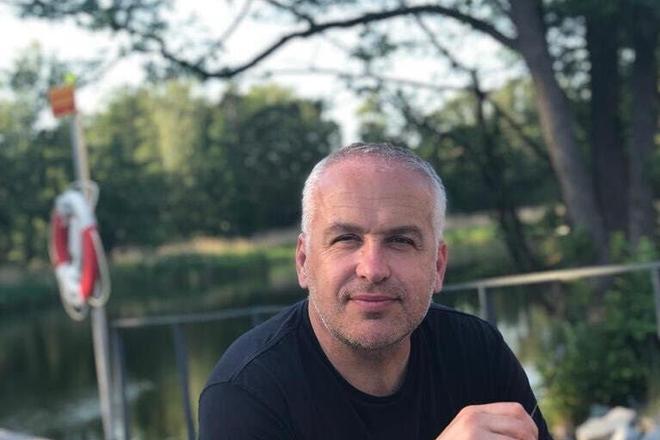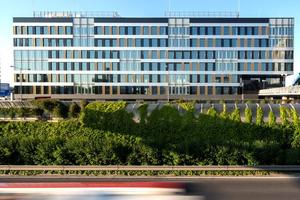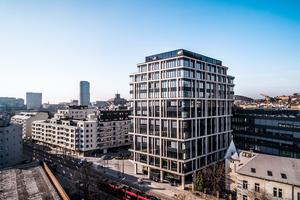When Marián Hlavačka launched the development company Corwin a decade ago, he wanted to bring something new to the real estate sector. As a lover of nature and hard data, he wished to construct buildings in a sustainable way with the help of the latest technology to return some of Bratislava’s nature, offering people a better environment for living.
“I wanted to create a development company with a human face,” said Hlavačka, whose ambition is to do real estate business differently so the word developer is no longer used as a swearword in Slovak.
The Slovak Spectator spoke with Hlavačka about the impacts of the Covid-19 pandemic, the shortage of flats in the capital, and the conversion of old buildings for new purposes.
The Slovak Spectator (TSS): What is the purpose of the two giant ants in front of the headquarters of Corwin?
Corwin
The Corwin development company was launched by Marián Hlavačka in 2010. Its name was inspired by Matthias Corvinus, an enlightened monarch who once ruled on the territory of today’s Slovakia in the 15th century. Corwin focused on residential projects first, followed by office buildings. Its projects include Rinzle in Rača; the Blumental Residences and Blumental Offices in the wide centre of Bratislava; the greenest building in Slovakia – Einpark Offices with a LEED platinum certification and the Einpark Residences in Petržalka; Dúbravy in Dúbravka, Guthaus (under construction) in Nové Mesto; the large neighbourhood revitalisation project in Palma and others. In Slovakia, Corwin is active only in Bratislava. The company is also working on a residential and office project in Ljubljana, Slovenia, with more foreign expansion plans in the pipeline.
Marián Hlavačka (MH): While ants are very likeable insects, the idea to install giant ants in several places around Blumentálska Street originated from the local community organisation Blumentálska Partia, of which we are a founding member. The Lost Ants project is a wakeup call for citizens, the city authorities and our peers from the development sector. Bratislava’s biodiversity has been reduced as a consequence of insensitive construction. It is up to all of us to protect it. Additionally, we like art and we always try to support it on our projects.
TSS: What impact will the pandemic have on the design of flats and offices?
MH: I both hope and doubt that there will be a huge impact, in that developers will learn a lesson from nature on how to defend themselves against the pandemic. It has shown us that we should behave more responsibly and make sure our buildings are closer to nature, from their location up to technical solutions. The answer to the pandemic should be more sustainable development and construction, innovations supporting healthy living and a lower focus on numbers in Excel tables and the monetisation of investments.
Personally, I am a big lover of nature, so even before the outbreak of Covid-19 we pursued solutions for healthier living, both in offices and in flats.
TSS: What is your definition of sustainable or green construction?
MH: Globally, three million people move into big cities every week. Urbanisation is a long-term trend that cannot be stopped. This is because agriculture has become extremely automated and the whole countryside is turning into a place where people prefer rest over manual work. Of course, the situation in Slovakia is not as extreme as in Asia or in Latin America, but Bratislava will continue to grow. Sustainable construction in Bratislava should be about increasing the density of construction, meaning building on free plots among the existing buildings and the numerous brownfields. Bratislava has not always developed logically and it has grown too wide. As a result, too few people live on the built-up area of almost 500 km2. A consequence is the unbalanced ratio of extensive and costly infrastructure to the number of citizens.



 Marián Hlavačka (source: Courtesy of Corwin)
Marián Hlavačka (source: Courtesy of Corwin)


